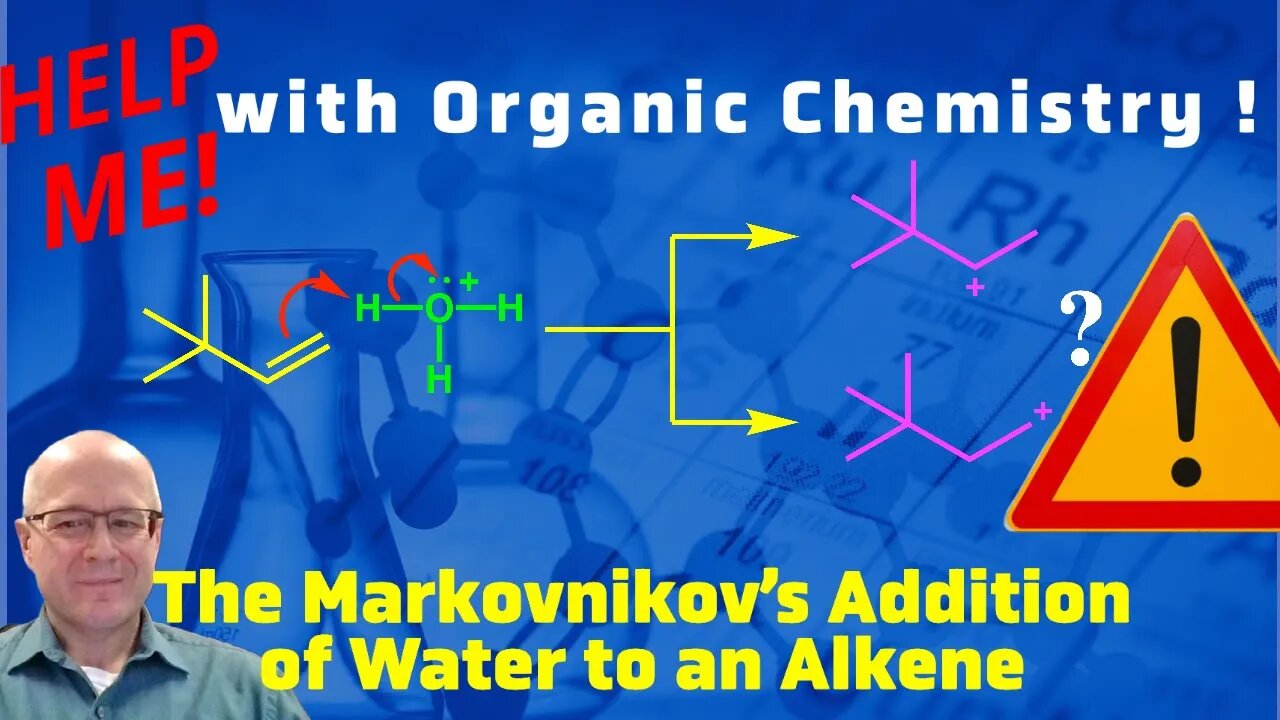Premium Only Content

Using Markovnikov's Rule to Predict the Product of the Acid Catalyzed Addition of Water to an Alkene
In this video I will discuss the mechanism and Markovnikov Addition of water to an alkene. This mechanism and video will illustrate Markovnikov's rule. In the first step of this mechanism the alkene acting as a base will hydronium and protonate it forming a carbocation. In the case of an asymmetrical alkene the carbocation could form on the most of the least substituted carbon. From our knowledge of carbocation stability we already know that the carbocation will form on the most substituted carbon. At the point water will attack the carbocation forming the protonated alcohol. Water will then deprotonate the alcohol reforming hydronium and creating the alcohol. This mechanism is acid catalyzed.
Failing organic chemistry? You do not have to fail Organic Chemistry!
This video is part of a series called How to be Successful in Organic Chemistry. In this series I go over numerous problems that a student could expect to see in there organic chemistry 1 course. Doing organic chemistry practice problems will make you more successful in organic chemistry and biochemistry.
I recommend that you download the problem from the link below and attempt the problem yourself and use this video to correct your work.
Download the problem from this video at the following link:
Good Luck and Good Chemistry!
Please subscribe to my channel by clicking the link below!
https://www.youtube.com/c/AllInwithDrBetts?sub_conformation=1
Like this video and leave a comment below!
-
 1:09:09
1:09:09
Chemistry Tutor
1 year ago $0.03 earnedAll About the SN1 Mechanism - Lecture 29 has need for more editing
78 -
 2:24:25
2:24:25
Matt Kohrs
9 hours agoFed's FOMC Decision Day Chaos || The MK Show
48.4K3 -
 LIVE
LIVE
Caleb Hammer
1 hour agoI've Never Met A Woman Like This | Financial Audit
242 watching -
 LIVE
LIVE
LFA TV
15 hours agoREMOVE MIKE JOHNSON! | LIVE FROM AMERICA 12.18.24 11am EST
4,560 watching -
 LIVE
LIVE
MYLUNCHBREAK CHANNEL PAGE
2 hours agoBuildings That Shouldn't Exist?
973 watching -
 42:09
42:09
BonginoReport
3 hours agoLock Her Up (Ep.107) - 12/18/2024
71.9K93 -
 LIVE
LIVE
Vigilant News Network
15 hours agoLiz Cheney’s Problems Just Got WORSE | The Daily Dose
985 watching -
 22:04
22:04
Scammer Payback
17 hours agoTorturing a Scammer Till They Give Up
11.8K11 -
 1:51:30
1:51:30
Game On!
15 hours ago $13.01 earnedConor McGregor vs Logan Paul: BIGGEST Boxing Match of the Century!
84.4K11 -
 1:04:06
1:04:06
2 MIKES LIVE
18 hours agoTHE MIKE SCHWARTZ SHOW with DR. MICHAEL J SCHWARTZ 12-18-2024
22.8K